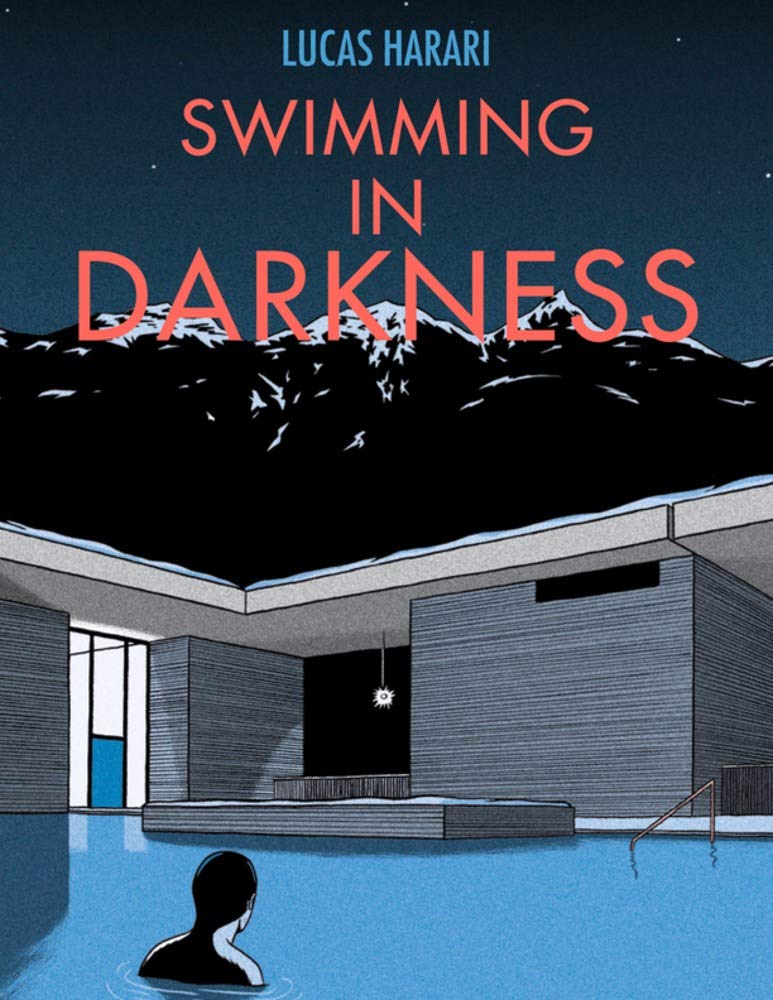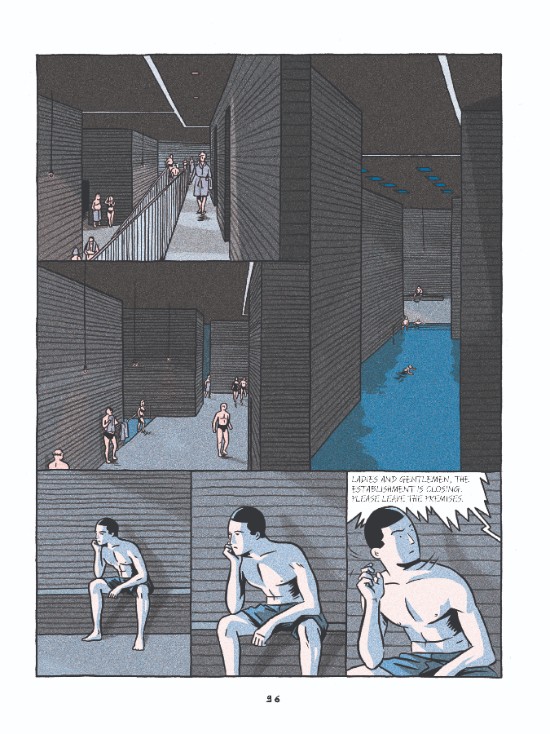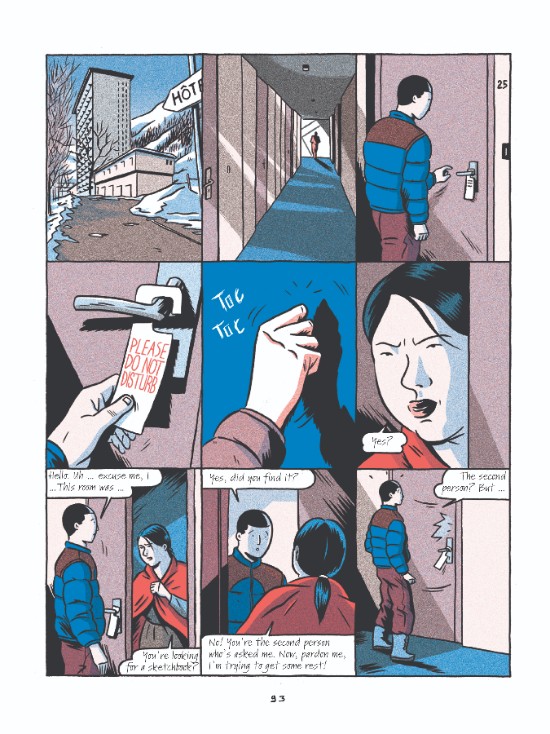
What happens when architecture, folklore, and horror converge? You get something like Lucas Harari’s graphic novel Sleeping in Darkness, about a young man whose visit to a remote complex built around thermal baths sends him on an uncanny journey abounding with obsession, secrets, and the presence of the uncanny. Harari’s characters are memorable, his pacing is fantastic, and his use of color is subtle and precise, making this book particularly haunting. I interviewed Harari about the graphic novel’s creation and the techniques used to create it.
The backstory of the baths, which sets the plot of Swimming in Darkness into motion, feels incredibly concrete and vivid. Were they inspired by any real locations?
At the origin of the project I knew I wanted to work on a genre story. And in particular that there would be a significant part of fantasy in the story. However, one of the structural principles of fantasy is to bring about a supernatural disruption in the midst of a realistic, everyday history. So I respected this aspect but in addition—as I myself had an intimate relationship with the subject I wanted to describe (the thermal baths of Vals, which I know and which I visited)—I found it interesting, and even more surprising, to play the card of autobiography. For that, I give a part to my father who is the vector that makes us enter the story and offers the reader a non-fiction contract.
In Swimming in Darkness, you make use of some timeless weird fiction structural effects, including the idea of this narrative as a found object. You also make use of some decidedly contemporary elements, like a TED Talk as exposition. How did you find the balance between the two?
I guess I don’t put up a barrier and allow myself to use all the references that are at my disposal. This both makes it possible to create very archetypal characters from old adventure comics, like the old hermit, and to stage what you have on hand in everyday life, like a computer… They are tags for the reader, who advances through a story as in a labyrinth. And this kind of landmark helps to energize the story.

What were the biggest challenges in terms of creating a book where architecture plays such a large role?
For me architecture is not the biggest challenge. It was actually the reassuring part, what I know, what I know how to draw. The graphic stakes of the sets were very important and I wanted to give them a tangible reality. The problem was rather to give life to cartoon characters in a rather realistic universe. So I tried to pull my characters towards the architecture and architecture towards my characters to find the line where the two can connect.
The use of color throughout Swimming in Darkness creates a powerful effect. What was your process like as far as creating the appropriate palette?
At first, it was a technical constraint. I started working on Swimming in Darkness at school for my degree. I wanted to self-published and I made it on a Riso printer we had at our disposal. It is a rather special printer that works with pure ink. The colors are printed layer by layer. First the red, then the sheet is put back and the blue is printed and so on… The rendering is very beautiful but the disadvantage is that it creates mismatches between the different layers. Kind of like vintage comic books. We are therefore obliged to limit the colors. So I got used to working that way. It becomes a system, a grammar. Moreover, I prefer to use colors in such a way as to serve the narrative and not only as a filling of form. So I always look for the best way for the color to express what a scene tells. I chose black for my line, blue is generally used for the sky, snow, water, stone and red as a structural counterpoint to blue either formally or more metaphorically. Then, I can combine these three colors, to have purples, roses, browns and thus alternate from a more realistic coloring to more symbolic passages where the color helps to express what is being played at a specific moment: isolate an element, or make an emotional tone.

When writing a book like this, where ambiguity plays such a large part, was it a challenge determining what to leave out and keep in?
Yes, it’s complicated. On one hand, there are concrete things that are written but that we know we have to hide in order to leave some interpretation to the reader, and on the other hand, there is what we ignore ourselves. For example, I would be unable to tell you where Pierre is today. The challenge is to find the right balance. I have watched a lot of David Lynch’s films, who is often at the border. There are people who don’t understand anything and who will remain outside the story and others who will spend their time over-interpreting this or that element. The secret, in my opinion, in this kind of story-telling is to develop a universe, an atmosphere strong enough for the story to close in on itself. So that things of real life do not become a point of comparison with what is happening. But a universe coherent enough for an internal logic to emerge and for the reader to project his fantasies, obsessions or fears inside…
Images courtesy Arsenal Pulp Press.
Follow Vol. 1 Brooklyn on Twitter, Facebook, and sign up for our mailing list.
